pick and roll defense
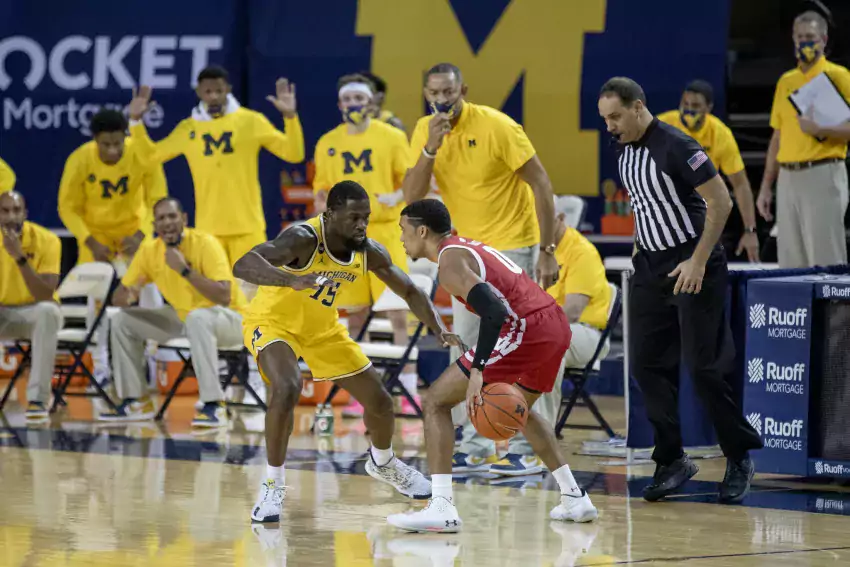
Michigan stuffed Wisconsin's 11th-ranked KenPom offense into a trash can on Tuesday. The Badgers shot 11-for-37 on two-pointers, got to the line only six times, and recorded eight assists against ten turnovers. Of their 12 offensive rebounds, five were the knocked-out-of-bounds team rebound variety, which doesn't pose any putback danger. They went stretches of 6:37 and 7:26 without scoring—that's getting blanked out for 35% of the game.
The Wolverines laughed at the idea of potential mismatches. A big guard against M's small backcourt? Brad Davison posted up Mike Smith on UW's second possession, hurled up a brick, and proceeded to go 1-for-8 for two points, his lowest scoring output in almost a year and the third-worst game of his four-year career by O-Rating. D'Mitrik Trice scored five points in the first three minutes, then two more for the rest of the half, and the Badgers were down 33 points by the time he got on the board in the second.
The primary worry heading into the game was that Hunter Dickinson would have trouble with a pair of legit stretch fives. Wisconsin's center duo of Micah Potter and Nate Reuvers combined for 16 points on 7/20 shooting with zero trips to the line, zero assists, and five turnovers. So much for that.
Michigan boasts the nation's #1 two-point defense and are tenth in KenPom's adjusted defensive efficiency. Using the Wisconsin game as a lens, let's look at how Juwan Howard has created this monster.
You Can't Run
Scoring on the fast break is obviously easier than scoring in halfcourt. A team can get a lot of their defensive work done early by getting back. This has to be demoralizing:
Michigan gets back. Wisconsin scored two fast break points on Tuesday even though they recorded four steals. I need a college stats site to start tracking chasedown blocks:
The plays that don't show up in the highlight reel are even more important than the Tayshaun-on-Reggie moments. Despite often holding massive leads, they've had very few lapses. Only 3.3% of initial opponent field goal attempts against Michigan occur in the first ten seconds of the shot clock following a made Wolverines basket, the fifth-best mark among high-major teams, per hoop-math. They communicate, find their matchups, and don't lollygag.
The team's size and versatility helps too; if, for example, Dickinson is caught upcourt after a tough finish, Wagner can be there to pick up the opposing center for a few seconds while the team settles back into their matchups. When teams attack cross-matches early in the shot clock, they find it tough to score. Here's Chaundee Brown forcing Nate Reuvers into a tough fadeaway:
It would've been better for Wisconsin if Reuvers had given that up instead of forcing the action. That often happens against Michigan. According to Synergy, M faces transition possessions only 12.6% of the time, the fourth-lowest rate in the Big Ten, a conference not exactly known for permitting easy fast break buckets.
[Hit THE JUMP before someone blocks it.]
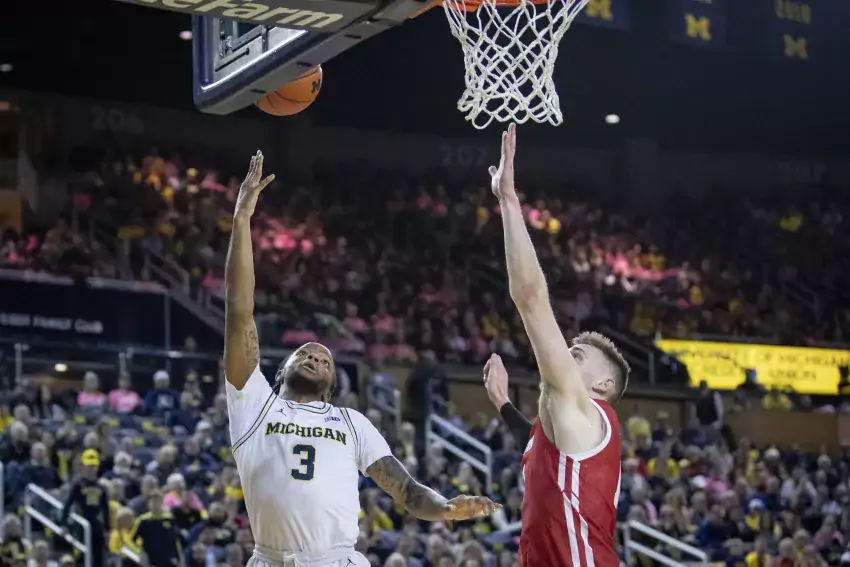
Juwan Howard learned from his first encounter with Wisconsin, just not quite fast enough for Michigan to pull off a double-digit comeback as the Wolverines fell, 81-74, in their lone regular-season meeting with the Badgers.
Michigan went into the game shorthanded; Eli Brooks sat out with the broken nose suffered in Saturday's win at Purdue, Wisconsin held a ten-point halftime lead as point guard D'Mitrik Trice (13 first-half points on 5/7 FG) and backup center Micah Potter (11, 4/6) exploited Michigan's big men with their pick-and-pop offense. On the other end, the Badgers stuck tight to shooters, limiting M to three attempts from beyond the arc. That forced Zavier Simpson to be the primary scoring threat; he entered the break with 18 points and no assists—no other Wolverine had more than five points. Adrien Nunez played a stint that went as you'd expect.
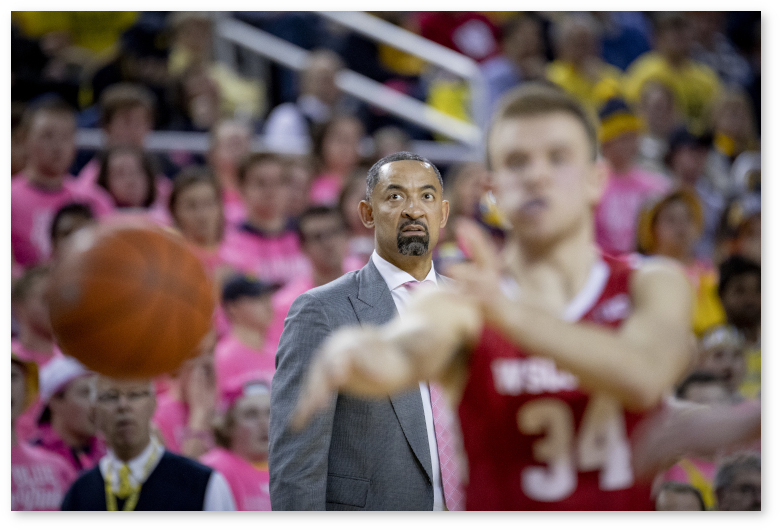 you can see Howard thinking "never again" [Campredon]
you can see Howard thinking "never again" [Campredon]
The approach to Wisconsin's swing offense, no-help defense, and lineups all had to change. To Howard's great credit, he made the proper adjustments. Michigan used more off-ball motion, leading to a Jon Teske layup, an Isaiah Livers three-pointer, a Franz Wagner layup, and three quick assists for Simpson. Instead of playing drop pick-and-roll coverage or switching as they did in the first half, Michigan hedged hard against the pick-and-roll. They cut the deficit to two points.
The Badgers countered with a 14-2 run sparked by Potter taking advantage of Austin Davis's limited defensive mobility. Teske returned to the court but picked up his third foul not long thereafter. Instead of going back to Davis, Howard fielded a wings-and-X lineup with Brandon Johns at center and had the team switch on every screen on defense. This slowed the Wisconsin attack while Simpson continued picking apart their defense. The margin dwindled to three.
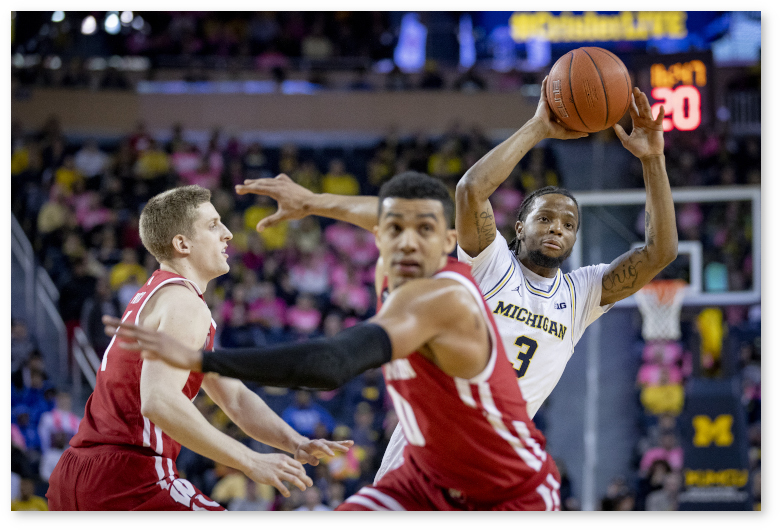 all six of Simpson's assists came in the second half [Campredon]
all six of Simpson's assists came in the second half [Campredon]
It wasn't quite enough. Simpson was masterful, posting a career-high 32 points, shooting 14/22 from the field, pulling down five rebounds, and dishing out six assists to one turnover; unfortunately, he went 3/7 at the free-throw line, missing the front end of a one-and-one and another FT in the game's waning moments. After Brandon Johns rebounded that second miss, he too missed the front end with Michigan still in the single bonus, and his wayward three-pointer with 12 seconds to play effectively ended the game. Grotesquely, Brad Davison got to hit the final free throws and grab the last, meaningless rebound.
Trice also missed a couple critical free throws down the stretch to keep the door ajar, but his ice cold three over Wagner with 2:30 to play gave some needed cushion. Trice finished with 28 points on 19 shooting possessions, while Potter and Aleem Ford added 18 apiece.
While Michigan found a secondary scorer in the second half in Franz Wagner, who poured in 15 of his 17 points after the break, a third option never emerged. Livers scraped to nine points on 11 shooting possessions. Teske had seven on 3/5 shooting but only played 23 minutes because of the success of the smaller lineup. Johns, DeJulius, Nunez, and Davis went a combined 4/14 from the field.
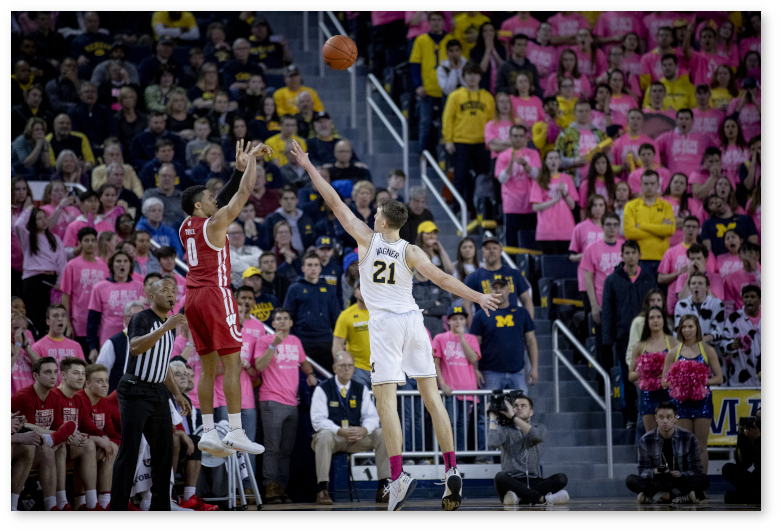 dagger [Campredon]
dagger [Campredon]
While the loss won't hurt Michigan's NCAA Tournament standing too much, it comes close to eliminating their chance at a double-bye in the Big Ten Tournament. At 9-8, the Wolverines rank seventh in the conference, and they're two games out of the fourth spot with three games to play and two teams ahead of them (Wisconsin and PSU) that hold head-to-head tiebreakers. In what should be a wildly unpredictable tournament, they'll have to hope for a good draw.
The good news is that, should Michigan see Wisconsin again, Howard appears ready to push the requisite buttons to beat them. As a first-year head coach, he continues to impress, even in defeat.
[Hit THE JUMP for the box score.]
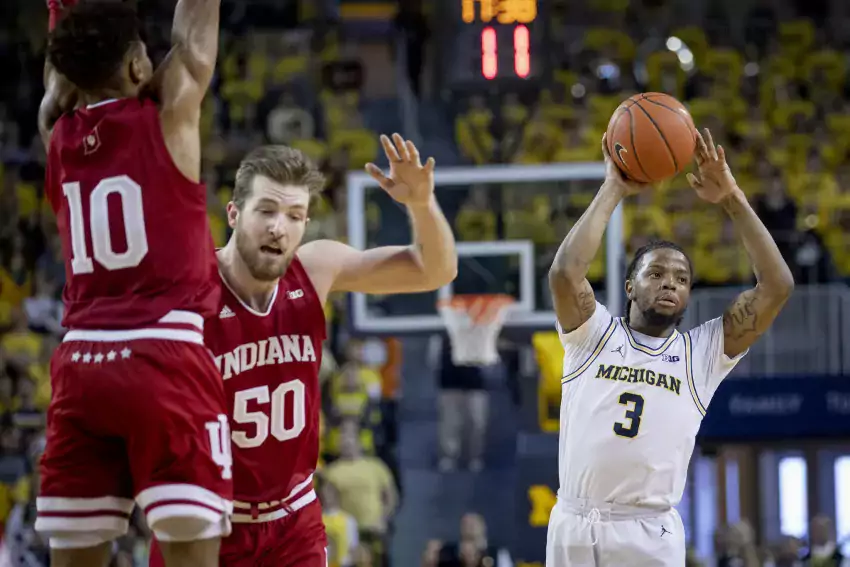
The Defensive Turnaround: Real or Opponent-Driven?
After Brian posted this in the Rutgers game column...
Teske back? Myles Johnson isn't exactly Luka Garza but he is shooting 53% from the floor on decent usage in Big Ten play. Teske shut him off. Johnson was 0/3 and all three of his shots might have been blocked by Teske. Indiana's Trayce Jackson-Davis had as many points (4) in the first three minutes of the Indiana-Minnesota game as he had against Michigan, when he was 2/3 from the floor. IIRC not much of De'ron Davis's game came against Teske.
Tillman did okay personally from two (6/10) but MSU collectively shot 38% from two; OSU shot 44% and Wesson's twos were mostly putbacks or fadeaway jumpers.
Teske's been very rough offensively for the last month but as Michigan's defense surges he seems to be a major part of that. A return game against Trevion Williams up next will be a good measuring stick.
...I took a look at Synergy to see if there were some explanation for Michigan's defensive improvement beyond Teske simply playing better. This led to an entire post's worth of information.
The stats that leap off Michigan's defensive page are their wildly varying abilities against certain sets. They boast a remarkably good pick-and-roll defense but are among the worst power conference programs against isolations and post-ups. Here are the numbers from Synergy for M's defense, with passes included (note: Synergy separates out putbacks from offensive rebounds, so the points per possession figures are lower than you might anticipate):
| % Time | Points Per Possession | Percentile Rank | eFG% | TO% | |
|---|---|---|---|---|---|
| Pick and Rolls | 33.5 | 0.724 | 95 | 39.7 | 12.8 |
| Post-Ups | 10.8 | 0.951 | 17 | 48.3 | 8.1 |
| Isolations | 7.1 | 0.918 | 13 | 48.7 | 9.6 |
The good news: pick-and-rolls are generally better offense than post-ups and isos, so if you have to choose a play to be killer at defending, that's the right one.
After that, I wanted a good visual of Big Ten offenses and their acumen in pick-and-roll and post-up situations. I'm dire at working with anything related to Excel, so thankfully Seth put together some scatter plots for me. My (rather obvious) operating hypothesis was that Michigan would prefer to avoid good post-up teams. Here are the Big Ten's post offenses charted by frequency and efficiency:
_6.png)
Michigan's worst defensive performances have come against these teams almost without exception—the outlier is the first Michigan State game, when the Wolverines couldn't slow down the Winston/Tillman pick-and-roll. Iowa, led by Luka Garza, broke the original scale—Garza is so obscenely good in the paint that the Hawkeyes are more efficient on post-ups than any Big Ten team is on pick-and-rolls. Purdue will, indeed be a big test.
The Wolverines haven't had many of those lately. Indiana is their worst defensive performance by adjusted efficiency since the Jan. 17th loss at Carver-Hawkeye. Their next-worst game in that span: Illinois. Other than Ohio State, which the defense handled relatively well despite the loss, Michigan's recent stretch of good defense has come against teams that generally don't post up often or particularly well—Rutgers checks both boxes.
I'm worried a decent portion of Michigan's recent defensive turnaround is due to the competition. The stretch run will be a challenge. The next three games all come against post-oriented teams: Purdue, Wisconsin, and Ohio State. Then comes a respite against Nebraska before closing the season against Maryland, a very good team but one that Michigan is well-suited to defense.
[Hit THE JUMP for why that's the case, plus a look at the conference's defenses and a preview of Sunday's M/MSU WBB tilt.]
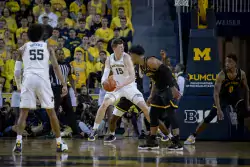
surprise! juwan howard knows how to utilize skilled big men.
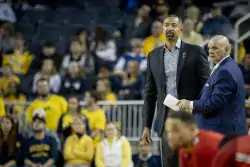
someone please score the basketball
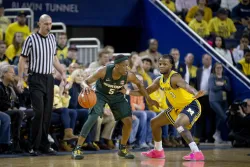
in which the Galactic Points Bestower turns Michigan off for ten minutes
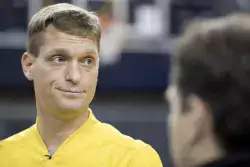
27